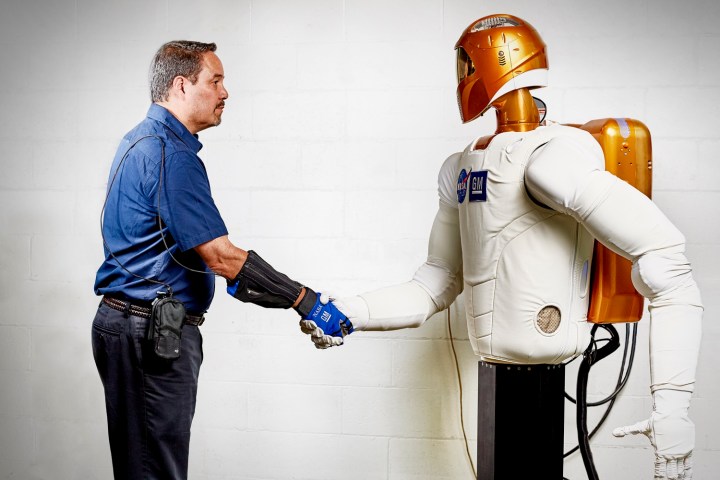
Bioservo plans to combine RoboGlove with its own SEM (Soft Extra Muscle) Glove technology to help assist industrial workers. It hopes to create a device that can improve worker efficiency while reducing fatigue in hand muscles, which can occur after just a few minutes of continuously gripping a tool, according to GM.
RoboGlove uses sensors, actuators, and tendons to mimic the operation of the nerves, muscles, and tendons in a human hand. It was part of a nine-year partnership between GM and NASA that included the launch of the Robonaut 2 (R2) robot into space in 2011. R2 was built to use tools designed for humans, so engineers had to give it human-like hands. That led to the development of the RoboGlove as a wearable force-multiplying device for humans.
Read more: Toyota reportedly in talks to buy Boston Dynamics
Back on Earth, Bioservo’s version of the RoboGlove technology will be used in manufacturing, medical rehabilitation, and other applications. In a statement announcing the licensing agreement with GM, Bioservo CEO Tomas Ward said he believes this could be the first step toward introducing soft exoskeleton technology globally.
GM intends to be the first U.S. manufacturing customer for the updated robotic glove, and will start by testing it in car factories. The carmaker previously tested the original RoboGlove in a pilot plant, but then opted to seek a partner to further develop the technology, including redesigning the hardware to fit multiple hand sizes.
GM isn’t the only carmaker investigating robotic technology. Hyundai recently unveiled a complete human-wearable exoskeleton, and Honda and Toyota have both built their own robots. It’s hard to say where all of this research will lead, but hopefully it won’t be the robot apocalypse.


